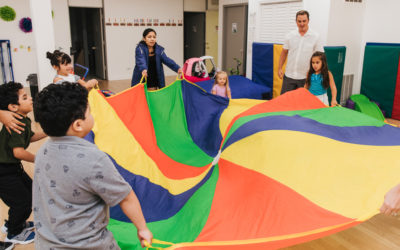Though a simple concept, neurodiversity is one of those terms that gets used a lot without much explanation. In its simplest definition, neurodiversity is the concept that when it comes to the human brain and nervous system, people don’t all end up the same. In other words, it’s a concept that describes individuality and uniqueness in cognitive functioning.
Beyond that, neurodiversity is also a growing movement. A reflection of positivity and the people-first mindset that builds acceptance and awareness for people with autism and other neurodevelopmental disorders. To understand the concept better, it’s good to know a little bit about its history and where it’s headed.
A Growing Movement
Neurodiversity became popular amongst individuals on the autism spectrum in the 90s. As more and more people on the spectrum began writing and blogging, the term floated around and was eventually adopted by journalists in the late 90s and early 2000s.
Today it is still a term symbolizing a growing movement. Many Autism advocates and famous adults on the spectrum will use the term, as well as the word “neurotypical.” Neurotypical is a word used to describe a person who is not on the spectrum. It is representative of the neurodiversity movement because describing people not on the spectrum as “normal” implies that those with autism are not. Instead, neurotypical is a more medically accurate and inclusive way of describing such individuals.
An Important Concept
Many rally behind this school of thought because they see it as an important concept for society and social progress. For one, it drives home the point that people with autism do not need to be “cured” but instead, may need certain accommodations and care like ABA therapy, or other forms of treatment that build on strengths.
It also normalizes the fact that there are many productive individual members of society who are not neurotypical. Explaining neurodiversity to neurotypical kids, for example, helps children with autism be accepted and appreciated in the social settings and situations where they may already be facing certain challenges.
If the concept is more widely accepted in the public eye, then research and policy supporting it will increase as well. That means more government and private sources of funding, support and services for children on the spectrum that is effective and safe.
If nothing else, the concept of neurodiversity is a sign of a time of social progress and positivity that will benefit generations of children with autism to come. It spreads a message of acceptance, and challenges the norm while using language and research that is inclusive to the needs of those on the spectrum.
A person with autism is more than just a person with autism. They are unique, creative and productive members of society who hold the same positions and attend the same schools and social functions that neurotypical people do. They look no different, though they may act different at times- and they deserve to feel proud of their uniqueness.
If you have more questions about neurodiversity, autism and what ABA therapy can do to support your child’s development, please reach out on our contact page or keep up with our Facebook, Twitter, and Instagram feeds.



